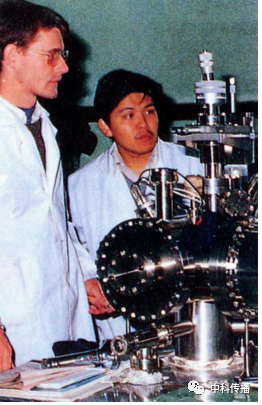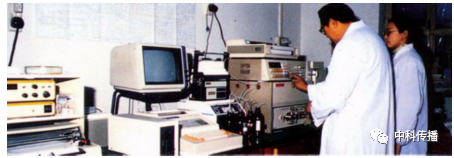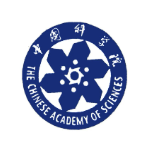It is better to learn from the past than from the present. The history of the Chinese Academy of Sciences (CAS) is a microcosm of the history of science and technology in the Republic of China. Understanding the history of the Academy helps us to better understand the heritage and development of the Chinese Academy of Sciences, to feel the culture and precipitation of the Academy, and to understand the development, changes and achievements of national science and technology. For this reason, CSCI Public Number has opened a special column ‘A Review of the Academy's History’, which focuses on the ‘Preparation and Establishment of the Chinese Academy of Sciences’ and ‘Establishment of the Academician System’, Themes such as ‘Preparation and Establishment of the Chinese Academy of Sciences’, ‘Establishment of the Academician System’, ‘Launching and Implementing the “Knowledge and Innovation Project”, and “Pioneering Action Plan”, etc., will be published on a regular basis from now on. From now on, we will publish articles on the history of the Academy on a regular basis to promote and disseminate the knowledge of the history of the Academy. We look forward to your attention.
✦✦
Chinese Academy of Sciences
Laboratories and Research Institutes
✦✦ Open Laboratories and Institutes of the Chinese Academy of Sciences
‘The opening of a number of research institutes and laboratories at home and abroad was one of the major measures in the reform of the scientific and technological system conceived by CAS in 1984-1985, which was discussed at a working meeting of CAS on January 6, 1985; the Interim Administrative Measures for the Opening of Research Laboratories was adopted by the presidential meeting on April 1; and the first batch of two institutes and 17 research laboratories were opened to domestic and overseas on July 1. On 1 April, the President's Office adopted the ‘Provisional Management Measures for Opening Research Laboratories’; on 1 July, the first batch of 2 research institutes and 17 research laboratories were opened to domestic and foreigners. The State Planning Commission, the State Science and Technology Commission and the National Natural Science Foundation of China and other relevant departments support the construction of open laboratories as one of the main forms of support for basic research. The open laboratory system has strongly promoted the development of basic research at CAS.
01
Harbinger of change
✦
On 22 November 1984, the State Council approved the ‘Outline of the Report on the Reform Issues’ of CAS, which requested ‘to actively organise the trial implementation, to sum up the experience through practice, and to make it perfect step by step’ In March 1985, the Central Committee announced the ‘Decision of the Central Committee of the Communist Party of China on the Reform of the Science and Technology System’, which made the direction of the reform of CAS even clearer. direction of reform and accelerated the pace of reform. The Proposal of the CPC Central Committee on the Formulation of the Seventh Five-Year Plan for National Economic and Social Development adopted by the Fourth Plenary Session of the Twelfth Central Committee of the Communist Party of China (CPC Central Committee) also pointed out that it was necessary to ‘renovate a number of laboratories in a planned manner, improve their research working conditions, and open them up to institutions of higher learning, research organisations, and key enterprises throughout the country’.
Selecting a part of the research institutes and laboratories to be open to the whole country was one of the important reform measures put forward in the Outline of the Report of the Chinese Academy of Sciences (CAS), and 20 million yuan was arranged in 1985 as the subsidy for the opening of laboratories. The leading idea was that CAS should take the lead in breaking the closed system and establishing a number of new research institutes.
The basic ideas of the Open Research Laboratory are:
(1) to break the departmental ownership system, to open the research laboratories with better conditions to the whole country, and to set up the Open Research Laboratory Fund for the whole country in order to promote the co-operation and exchanges among scientists;
(2) The research laboratories will have only a few fixed establishments, and the researchers will implement the mobile guest system, so that outstanding scientists and technologists from all over the country can apply to the laboratories to conduct research work through the subject;
(3) Establishing an academic committee of the research laboratory composed of peer scientists from all over the country, responsible for guiding the research direction and academic evaluation;
(4) Respecting talents and giving full play to their creativity, creating conditions for outstanding young people to give full play to their intelligence and stand out.
At the end of 1984, CAS organised national peer experts to comment on the five national key laboratories built by the State Planning Commission in the institution and some laboratories with a better foundation. Based on the evaluation, the first batch of open institutes and laboratories were approved, and the basic policy of ‘openness, mobility and association’, the relatively independent organisational mode of research entities, and the competition mechanism of regular inspection and evaluation were also proposed. Because of the large number of disciplines in the institutes, it was difficult to manage and evaluate them effectively, and subsequently, the main focus was on building open laboratories and exploring the establishment of a new nationally oriented research system.
02
First open institutes and laboratories
✦
President Lu Jiaxi of CAS mentioned in his concluding speech at the work conference of the Academy in January 1985 that ‘in order to turn the Academy into a comprehensive research centre of natural sciences (including basic sciences and engineering sciences) in the country, we have to open some of the institutes and laboratories to the whole country step by step’.On 29 June and 1 July 1985, the President's Office Meeting approved the opening of 2 research institutes and 17 research laboratories to the country and abroad based on the comments of the experts and appointed their directors and laboratory directors. 5 of the 17 laboratories were in physics, 2 in chemistry, 3 in biology, 4 in geology and 3 in technical sciences.
The first batch of open institutes and open research laboratories are listed below:
1 Institute of Theoretical Physics Director: Zhou Guangzhao Vice-Director: Hao Berlin
2 Institute of Mathematics Director: Yuan Wang Deputy Director: Le Yang
3 Open Research Laboratory of Structural Chemistry, FUJIAN INSTITUTE OF PHYSICAL STRUCTURE Laboratory Director: Lu Jiaxi
4 Open Research Laboratory of Electron Microscopy, Beijing (KIEF) Laboratory Director: Guo Credible
5 Open Research Laboratory of Solid State Atomic Imaging, Shenyang Institute of Metals, China Laboratory Director: Hengqiang Ye
6 Open Research Laboratory of Vacuum Physics, Beijing (KEYI) Laboratory Director: Shijin Pang
7 Open Research Laboratory of Molecular Enzymology, Institute of Biophysics Laboratory Director: Chenglu Zou
8 Open Research Laboratory of Reproductive Biology, Institute of Zoology Laboratory Director: Zhiyi Zhang
9 Open Research Laboratory of Fungi and Lichen Systematics, Institute of Microbiology Director: Jiangchun Wei
10 Open Research Laboratory of Engineering Geomechanics, Institute of Geology Director: Sun Guangzhong
11 Laboratory of Atmospheric Numerical Modelling, Institute of Atmospheric Sciences Laboratory Director: Qingcun Zeng
12 Open Laboratory of Ion Beam Research, Shanghai Institute of Metallurgy Laboratory Director: Shichang Zou
13 Open Research Laboratory of Infrared Physics, Shanghai Institutes of Technology and Physics Laboratory Director: Xuezhu Shen
14 Open Research Laboratory of Internal Consumption and Solid Defects, Institute of Solid State Physics, Hefei, China Laboratory Director: Ge Tingsui
15 Open Research Laboratory of Organic Geochemistry, Institute of Geochemistry, Guiyang, China Laboratory Director: Jiamu Fu
16 Open Research Laboratory of Biological and Gas Geochemistry, Lanzhou Institute of Geology Laboratory Director: Yongchang Xu
17 Open Research Laboratory of Population and Atomic and Molecular Physics, Wuhan Institute of Physics Laboratory Director: Zhaohui Ye
18 Open Research Laboratory of Structural Analysis, University of Science and Technology of China (USTC) Laboratory Director: Wu Ziqin
19 Open Research Laboratory of Laser Spectroscopy, Anhui Institute of Optics and Mechanics Laboratory Director: Songhao Liu

Guest researchers from the Solid State Atomic Imaging Open Laboratory at the Institute of Metals debugging the
Laser atom probe (image from the web)

Reproductive Biology Open Research Laboratory at the Zoological Institute
(Image from the Internet)
03
Open laboratory managemen
✦
Open Laboratory of the Chinese Academy of Sciences (CAS), which focuses on fundamental work in basic and applied research. The project funding is based on a fund system. The scientific fund of the Open Laboratory is mainly allocated from the Natural Science Fund of CAS, and may also be raised from other sources.
According to the Provisional Measures for the Administration of Open Research Laboratories, an open laboratory may consist of an institute or of one or several chambers of an institute. Open research laboratories attached to an institute are relatively independent in their business work and carry out research and academic activities independently.
The open laboratories implement the system of evaluation by the academic committee and responsibility of the director. The Academic Committee decides the research direction of the Laboratory, validates the Fund Guidelines, evaluates the research topics and the amount of their fund support, organises the evaluation of the results, and deliberates on the promotion of scientific and technological personnel. The committee is composed of a number of high-level peer scientists, and the director of the committee may be appointed by the director of the laboratory at the same time. The members are nominated by the director and appointed with the consent of the director, and no more than one-third of the members of the Laboratory shall be appointed. The director of the laboratory is fully responsible for the operational and administrative management of the laboratory, creating a favourable research environment and producing more high-level research results. The director of the research laboratory is selected and employed by the President of the Academy of Sciences from among domestic and foreign scientists for a term of three years.
The management regulations stipulate that the open laboratories are equipped with the necessary technical staff, but only a few competent fixed researchers are employed, and some or even most of them should be mobile guest researchers. Both domestic and foreign scientists can apply for projects within the scope of the guidelines for project application put forward by the Open Laboratory, and be approved by the Academic Committee for funding to carry out scientific research in the Laboratory, or apply for employment to participate in collaborative research. The Open Laboratory also welcomes researchers from inside and outside the institution to bring their own projects and funds to work in the laboratory. All researchers working in the research laboratory can represent the research laboratory to participate in various domestic and international academic activities.
In short, open laboratories are conducive to breaking down departmental ownership, thus raising the level of research work; they are conducive to the intersection and penetration of different disciplines, promoting scientific innovation activities and the development of new disciplines; they are conducive to the gathering and training of excellent scientific talents, promoting the mobility of personnel and the exchange of academic ideas; and they are conducive to improving the utilisation rate of equipment, so that less investment can bring about a higher effect of investment. As of 1999, CAS has built 117 open laboratories, 50 of which are State Key Laboratories.
In the development of CAS, the open laboratory system is one of the important reform initiatives, the implementation of this system, strengthened services for the development of basic research, to attract and cultivate a large number of scientific and technological talents, during which a number of outstanding academic leaders emerged, many of whom contributed to China's scientific endeavours and were honoured as academicians.
[References
1. Fan Hongye: Chronicle of the Chinese Academy of Sciences: 1949-1999, Shanghai Science and Technology Education Press, 1999
2. Wang Yangzong: Sixty Years of the Chinese Academy of Sciences (1949-2009), Picture Book
3. General Office of the Chinese Academy of Sciences, ed: Annual Report of the Chinese Academy of Sciences (1985)
4. Provisional Measures for the Administration of Open Research Laboratories of the Chinese Academy of Sciences, Proceedings of the Chinese Academy of Sciences, No. 1, 1986
5. Bai Luna, Chen Jiaoxiang: ‘Basic Research of the Chinese Academy of Sciences from Several Sets of Data’, Proceedings of the Chinese Academy of Sciences, No.3, 1999
